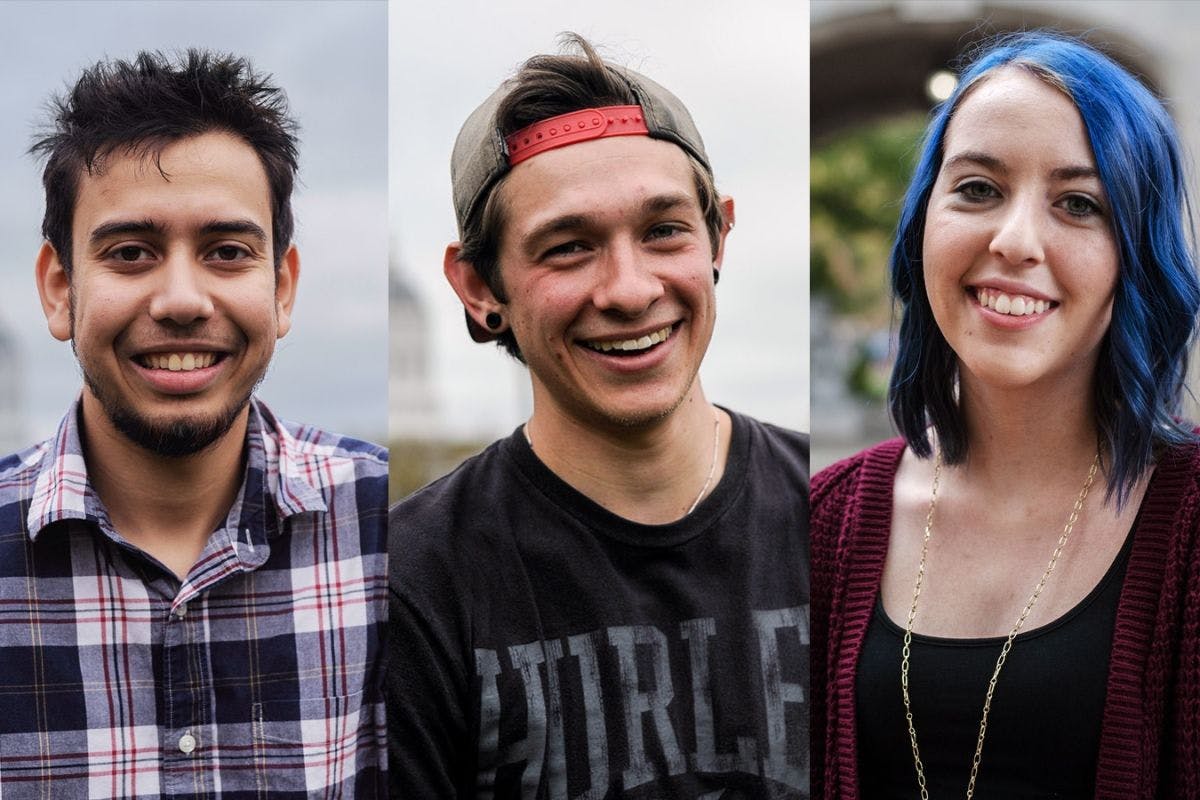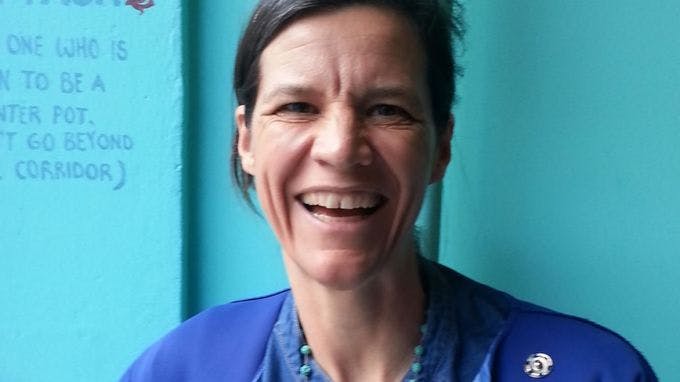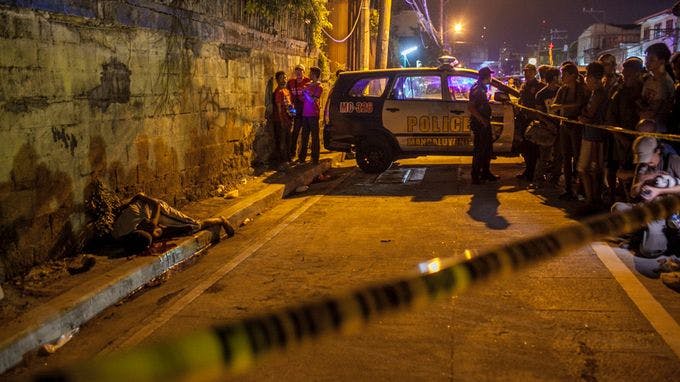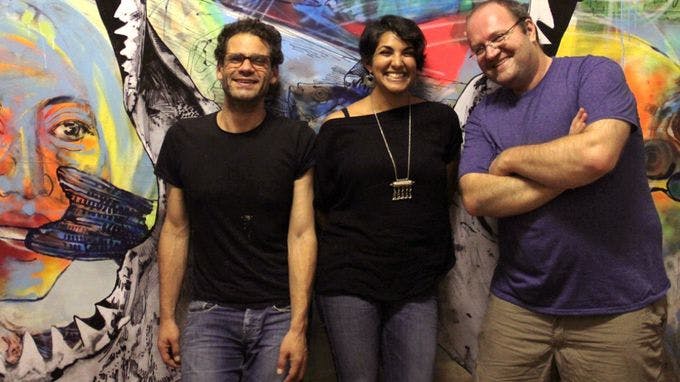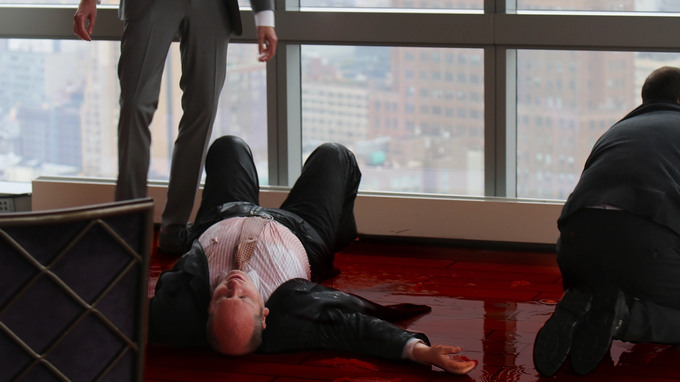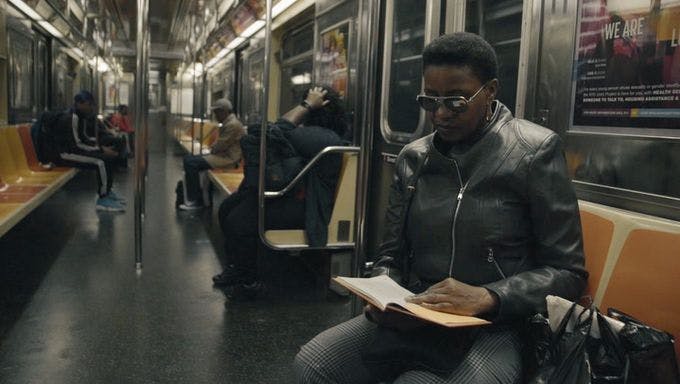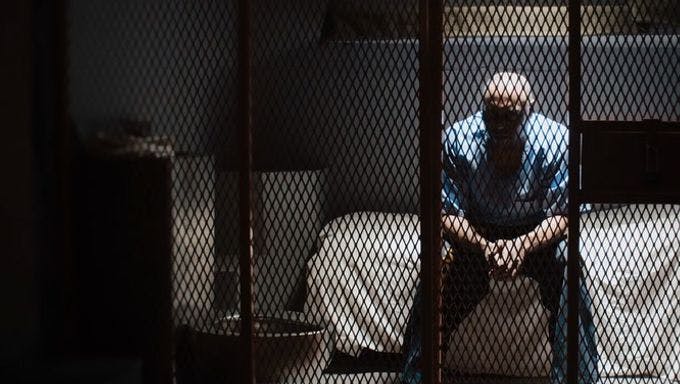For several days in November, the nation’s eyes were turned to Columbia, Missouri, a modest-sized, leafy town between St. Louis and Kansas City, and the home of the main campus of the University of Missouri. In response to several incidents of racist harassment on campus, which many black students viewed as merely the tip of the iceberg, a group called Concerned Student 1950 — a reference to the first year black students were admitted to the university — began a series of public demonstrations. Catalyzed by student Jonathan Butler’s hunger strike on November 3, and the football team’s threat to stop playing five days later, the president of the Missouri university system, Timothy Wolfe, resigned on November 9. As protestors celebrated their victory in a tent city on a university green, a secondary conflict arose between supporters of Concerned Student 1950 and members of the media, many of them students at the university.
As debates mushroomed in the news and on social media, a small group of student filmmakers began capturing the entire series of events from the inside. The first students in the Documentary Film sequence at the new Jonathan B. Murray Center for Documentary Journalism, studying under department director Stacey Woelfel and filmmaker Robert Greene (Actress), these junior-year students grabbed their cameras, gained access, and captured footage that no other outlet could, operating — and learning — utterly on the fly. Field of Vision spoke with the three credited directors of “Concerned Student 1950” — Varun Bajaj, Adam Dietrich, and Kellan Marvin — about the challenges of access, collaboration, emotional investment, and making a film about their complicated university community.
When did you start tracking the developing story on campus?
Varun Bajaj: We had all heard about the incident with Peyton Head, our student body president, being called a racial epithet on campus. We’d all heard about the swastika that was drawn in a bathroom, we’d heard about our LBC court — which is the Legion of Black Collegians — being berated with racial epithets by drunk men. And so there were all these things happening on campus, and I think people in the black community on campus were really getting fed up with what was going on. The protests started, and the rest of campus didn’t really start putting together that this was going to be something bigger until JB [Jonathan Butler] started his hunger strike.
Adam Dietrich: I remember it was Tuesday, November 3. Bill Ross, who worked on Western and 45365, was doing guest lectures in all of our classes that week. Stacey [Woelfel] brought up the hunger strike that had started a day earlier, [and he said] to Bill, “What would you do? How would you go about shooting something like this?” And [Bill] said, “I would literally get up out of class right now, go get a camera, and start shooting immediately.” So as soon as we were done with class, that’s exactly what I did. I grabbed Varun and we headed out toward the campsite. At first they were really apprehensive to let us do anything. They just brushed us off and said, “Here’s an email address, let us know later what you want to do and we’ll get back to you.” They really didn’t seem like they were going to give us access at all. So I spent the next 24 hours asking through friends of friends, looking for someone I knew that might be able to connect me with some of the people that were part of the original organizers of the protest. Finally I found a girl I work with who was able to send a text message to Jonathan Butler himself and say, “Hey these guys are serious and they’d probably do justice to the story and try to tell it right.”
Bajaj: Once Adam got the access through JB, they just opened up to us and allowed us kind of free reign. We just hung out at the campsite for a few days — we weren’t even really rolling, we were just meeting people. And from then on, I didn’t really have any problems with anyone. Everyone was just so welcoming and open once they realized that we weren’t just there to stick our cameras in their faces.
Did you discuss that specifically with them?
Bajaj: Yeah, they had conversations with us about how they felt more comfortable with us. And after a few days, they started to put up “No Media” signs at the campsite, until they just had us [around]. Then as things started to escalate and protests started to happen, they were giving us the protest routes to help us with our shooting. The daytime media wasn’t getting that — I think right off the bat everyone knew we were doing something longform, something deeper. They trusted us, and we are so grateful that they did. Because there’s no way we could have gotten the story without that.
Dietrich: It wasn’t so much a First Amendment approach that we took. They really understood that we’re not from some newspaper or website trying to get a few pictures to put on the internet and make a paycheck. They really understood that we were there to be there, to really absorb as much as we could. And then Kellan kind of took a different path.
Kellan Marvin: I was just there, camping out and going to prayer groups and everything. One night, everyone made Adam and Varun go home and actually get some sleep, so overnight I filmed some stuff. Then Adam approached me because he said they needed an editor because I guess have a reputation for that, and so I started filming with them more. And it was easy for me — people recognized me around camp. But there’s still so much footage of people coming up to us and being like, “Can you guys not be here with your camera?” And I’m like, “I’m with Adam.” And they’re like, “Oh! Adam. OK.”
You got some great footage, a lot of it at close range. Not only did you get access, you were able to capture the sort of intimate, close-up shots needed for this kind of storytelling. Did you have to negotiate that degree of proximity, or did it come naturally as events unfolded?
Dietrich: It was a bit more natural. Earlier on they’d come to us and say, “It’s really cool that you’re doing a documentary. What kind of stuff are you looking for?” Then [at other times people would say], “This is a really emotional time for a lot of us and we’re all probably going to be crying.” And we were very upfront, saying, “Well, if you’re crying, I’m going to bring the camera and put it in your face because those are moments we need to tell your story. But also, if you’re ever at a point where I’m in your face and you’re letting me film you crying, and you’re like, ‘This is too much, I just need a second,’ just say, ‘Adam, go away.’” And I’d turn the camera off and walk the other direction to let them have their time. I can only imagine how grueling some of these things were for them, emotionally and mentally. It was a combination of acquiring access for moments like that and also just being human.
Bajaj: We weren’t afraid to put our cameras down. We filmed a few prayer circles here and there, but there were other times when we joined in on the prayer circles, and times when we cried with them. And cried while we were shooting.
I don’t think there’s a right answer to this, but I’m curious about the degree to which you felt like you were participating in what was going on. You needed to be somewhat removed from it in order to do your job, but you’re also there as a person and fellow student.
Bajaj: I actually think I got a little bit too involved. I’m a student of color, I’m of Indian descent, but I don’t go through nearly the same things that the black students on our campus go through. But we were spending 18, 20 hours a day with them, so it was impossible, for me at least, to not consider myself part of the movement. But I did understand that I had a different role in the movement than anyone else because we were there as filmmakers. I still consider the people we met to be some of the greatest people I’ve met at Mizzou, and some are great friends now. For me, it got very, very personal.
Marvin: Actually, one of the original members of one-nine-five-oh is in sociology class with me. We would have conversations about this all the time, so I felt way more involved in all of the activism from the beginning, and kind of had a hard time when I was I expected to be a student journalist, because I saw how many journalists were out there just hoping it was their big break. Obviously, I’m never going to be able to entirely separate myself from how I feel about these issues, and the fact that I actually do want to participate in being part of the change, not just capturing it.
Dietrich: There were a few things that I did intentionally through the process to keep myself as objective as possible. You know, I’d put the camera down and hang out and sit with them and just be another student, and then I’d pick the camera up and use the lens as a shield between me and them, to keep me a little bit more objective. But it was really hard. There were a lot of times, especially early on, when it was really emotional. Varun and I would have to pull each other back. I’d see him crying and chanting into his microphone, and I’d go to him and say, “You know, take a second, go calm down so you can appropriately shoot.” And he’d do the same thing for me.
Bajaj: This was such a huge thing on campus. This involved a university president, the highest educator in our university system, so this consumed campus. I didn’t really get to see my friends, [but] when I did talk to them, like via text, I would say, “I can’t talk about anything other than one-nine-five-oh. Is this affecting you guys in the same way?” And everyone was like, “Yeah. No one is talking about anything but this.”
Lets shift over to another aspect of this, which I would imagine was a real challenge considering the personal and emotional toll this was taking on all of you. Amid the developing events, were you strategizing for shot making? Were you considering yourselves, like, camera one, camera two, and camera three — planning out how to cover events on particular days or during particular moments?
Dietrich: Very quickly, Varun and I got really good at talking without talking. We’d see each other in the middle of a crowd and give each other this little look or hand gesture. But we also planned things out beforehand. We established our main eight or 10 characters who were going to pull this thing through when we [got to] the editing process. Depending on the event that we were shooting, Varun would say, “OK, I’m going to take characters. Adam you’re going to take the crowd as a whole and shoot reaction-type stuff or large group shots.” And then when Kellan came on a little later in the process, we would put her on detail stuff — hands, leaves, tightly focused stuff. So we did a lot of talking about it, but it’s really hard to plan how to shoot a protest when they’re marching through campus and the entire thing is live and happening in the moment.
Bajaj: Adam’s great at finding the right people in a huge crowd and getting their eyes, getting what they’re feeling. Kellan is amazing at detail shots and inserts and things that are more metaphorical. For me, I was definitely not afraid to be up front, and to be in the rest of the media’s photographs, so I was inches from people’s faces while they were leading the protest. After a little while, I think all of us realized our strengths. But everything goes out the window once [the action] starts. Then we just do our best, and try to feel the moment.
Marvin: Yeah, I hate group projects, but this actually worked out really well.
Do you feel any anxiety about putting this out there now? A sense of responsibility because of the access that you received?
Dietrich: Definitely, there’s a big feeling of responsibility. Because at this point, I feel it’s our job to do a really good job of telling this story. And then there’s this kind of backhanded piece to it, where I’m a white guy and I don’t want my voice to speak louder than theirs, because that completely dilutes their message, you know? I don’t want this to be whitewashed in any way, I don’t want to be able to see our fingerprints on it very much. I want to tell their story the way they’ve been telling it, because that’s literally the point of their movement.
Marvin: My anxiety is whether or not it’s as clear as we think it is. I’m with my grandparents right now, and I’ve been having a lot of conversations about this, and no matter how clearly I think I’m putting everything, as black and white as I can make it, it’s still not changing minds, it’s still not changing hearts. And so I’m just concerned that we’re not doing as big of a favor as we would like to.
Bajaj: For me, the anxiety comes from the fact that they didn’t want the media there because they knew students were only there to get their big break, and now we’re putting our names on this project. That’s something I’ve had to grapple with every day while working on this. I still don’t know how to feel about that. But this is my role in the movement, getting this footage out there. I guess I feel, the word I would use is a little dirty, that we’re being interviewed right now rather than them. But that’s something that I’m just going to have to deal with.
Everything you’re working through sounds just like the issues at play for filmmakers who’ve made numerous documentaries — the logistical challenges, the personal struggles, the dynamism of collaboration, the anxieties over doing your subjects justice. Yet since all three of you are new to nonfiction filmmaking, what do you feel that you’ve learned? Are you different filmmakers than you were just a few weeks ago?
Dietrich: Every other project, even in the documentary class, has been four- or five-minute short pieces where I could really visualize what the end result was going to look like before I even shot anything. Then one night, Varun and I were unsure of ourselves — like really, really unsure of ourselves. It was the first night that national media had gotten on the scene and CNN was in town, and the New York Times was there, and we started to feel like small fish again.
Bajaj: It was when we found out about the football team [threatening to refuse to play]. We were just like, “What are we doing?”
Dietrich: Then we got on the phone with Robert [Greene] and he’s like, “You guys were stupid enough to pick up the camera and get started on this thing, so finish it.” And that was the thing that we needed — to understand that we didn’t know what we were getting into. Even though I thought I did, I truly had no idea, and to think that I would have some idea of what the outcome would be when I started was just ignorant of me. So I learned to take projects like this in bite-sized pieces, truly just one step, one day at a time. You know — let’s pick up the camera and figure this out. I’m going to shoot here, Kellan’s going to do this, Varun’s going to do that. To spend more time behind the camera, more time with subjects and people that we’re working with, more time working in a team. The kind of things they want to teach us in school, but at this point, I believe you can’t learn that stuff in a classroom, you have to just go out there and do it.
Marvin: There were two big things for me. The first one was — and this is such a cliché — I learned what I need to learn. I need to learn how to shoot like Varun and find the real action, and I need to learn from Adam how to get access to people who might not necessarily want to be on film. And the other thing for me was, before documentary was even an option at Mizzou, I was like, I guess I’ll just work at [local TV station] KMU and eventually go from investigative into documentary making. I spent a lot of time in that newsroom, which is a very stressful environment, but it’s also very routine. I guess my problem with it was that you never got to develop those [close] connections. But documentary is very different from journalism, and it’s kind of re-learning everything I’ve come to think about what capturing real life should be.
Bajaj: This was the hardest thing I’ve ever done in my entire life. They were grueling days — it was emotionally and physically exhausting. But I found my passion through this process. I didn’t know that I knew how to shoot. I found that out while I was out there. We started this program in August, four months ago. I had no idea what I was doing. I had taken one multimedia journalism class. I’d watched a bunch of documentaries and I’d gone to True/False [Film Fest], but I didn’t know it was something that I could actually do. Adam and I always talked about projects that we wanted to do, and they always seemed so huge and impossible, but now I know that they’re not going be impossible, they’re just going be very, very hard. But if you put your head down and work your ass off, it’s something that you can do. So for me, I have the confidence that I can be a part of something that can mean something. I mean, the story literally landed on our front door, and we just picked up our cameras and went.
